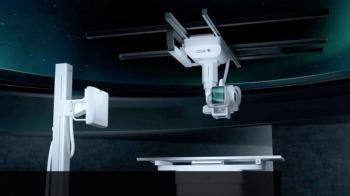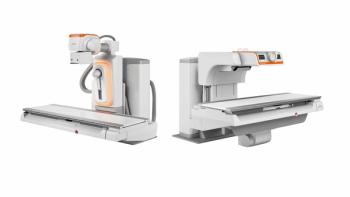
Real-time radiology scheme enhances CR/DR productivity
Radiologists can spend less time manipulating computed/digital radiography (CR/DR) images with a new scheme developed by researchers at the University of Washington and Mayo Clinic Rochester to facilitate real-time radiology. The use of high-performance processors dramatically speeds up image processing.
Radiologists can spend less time manipulating computed/digital radiography (CR/DR) images with a new scheme developed by researchers at the University of Washington and Mayo Clinic Rochester to facilitate real-time radiology. The use of high-performance processors dramatically speeds up image processing.
The scheme, described in the July issue of the Journal of Digital Imaging, uses a new programmable processor as the main computing engine of enhancement algorithms for CR and DR images (J Digital Imaging, epub 13 July 2004).
"We have used a new generation of high-performance processors developed for consumer products in imaging and video applications, known as media processors," said Maikael A. Thomas, an electrical engineer at the University of Washington.
To demonstrate the feasibility of using a media processor as a computing engine for CR/DR image processing algorithms, the researchers mapped representative postprocessing algorithms to a single MAP processor from Hitachi/Equator Technologies.
On a 12-bit 2688 x 2688-pixel image, the new method has achieved execution times of 465 msec for adaptive unsharp masking, window/level, image rotate, and lookup table operations using a single processor. This represents at least an order of magnitude improvement compared with the response time of current systems, according to the paper.
The image enhancement and manipulation algorithms typically performed on CR and DR images are computationally expensive. For example, some commercial systems can take approximately 30 seconds to process a 2688 x 2688 image, while others have a cycle time of up to 38 seconds for a 2560 x 3072 image, Thomas said.
"These systems take from three to 10 seconds to generate a preprocessed image from the time of x-ray exposure," he said. "Considering other components included in the cycle time, it is safe to assume that the postprocessing algorithms take on the order of 10 seconds on these systems."
With the increasing capability and clock frequency of media processors, it will be possible to support new, more sophisticated algorithms and the increasing matrix size of CR/DR and other medical images, Thomas said.
"We believe these modern processors, efficiently utilized in CR/DR devices and PACS workstations coupled with the reengineered workflow described in this paper, will have a positive effect on productivity in the future," he said.
Newsletter
Stay at the forefront of radiology with the Diagnostic Imaging newsletter, delivering the latest news, clinical insights, and imaging advancements for today’s radiologists.




























